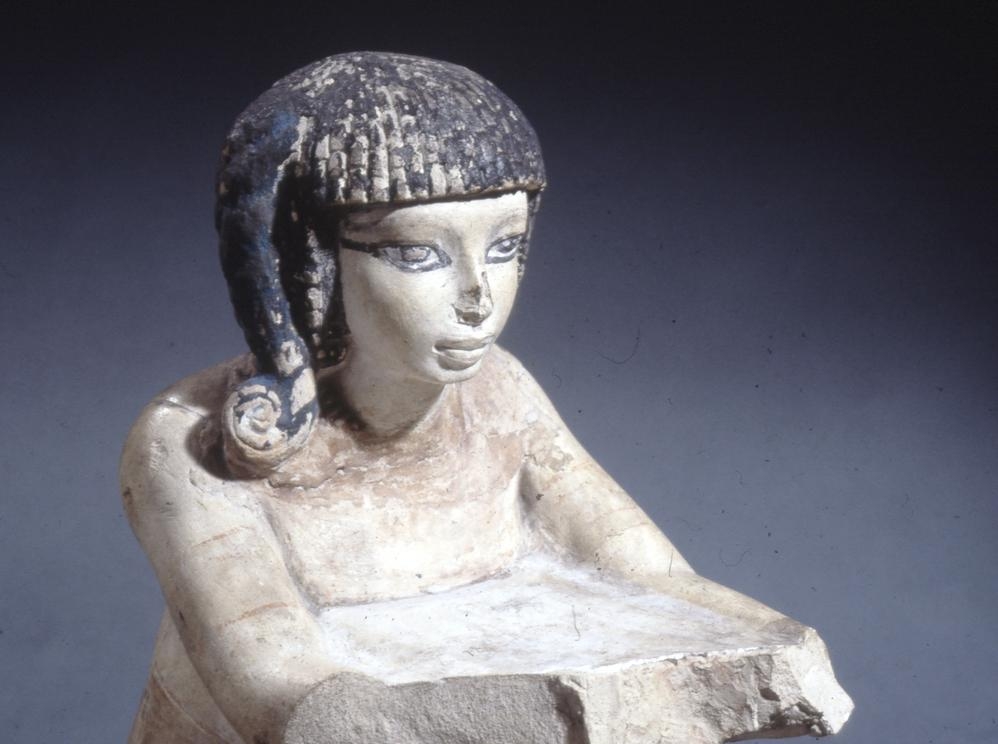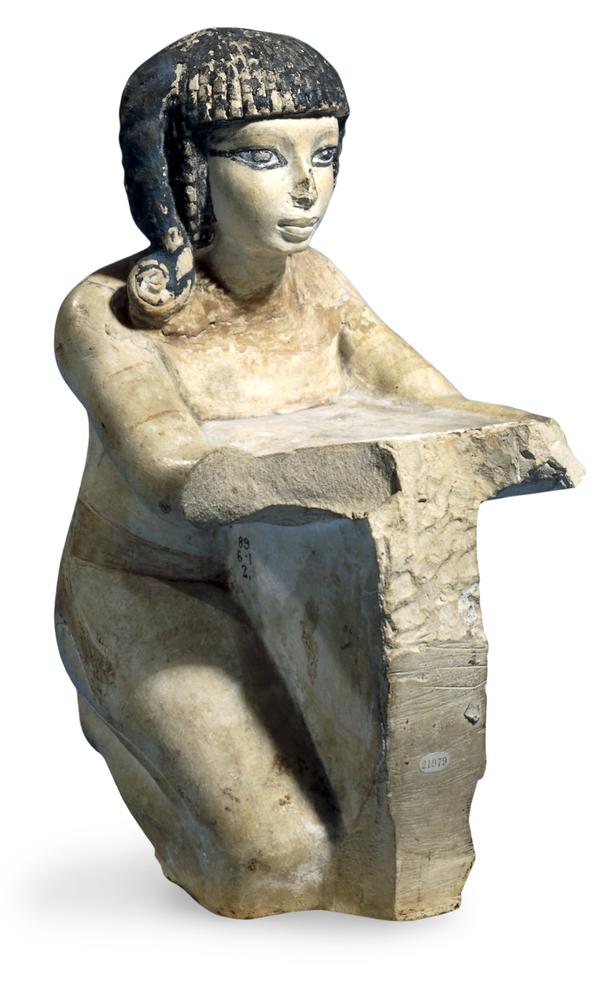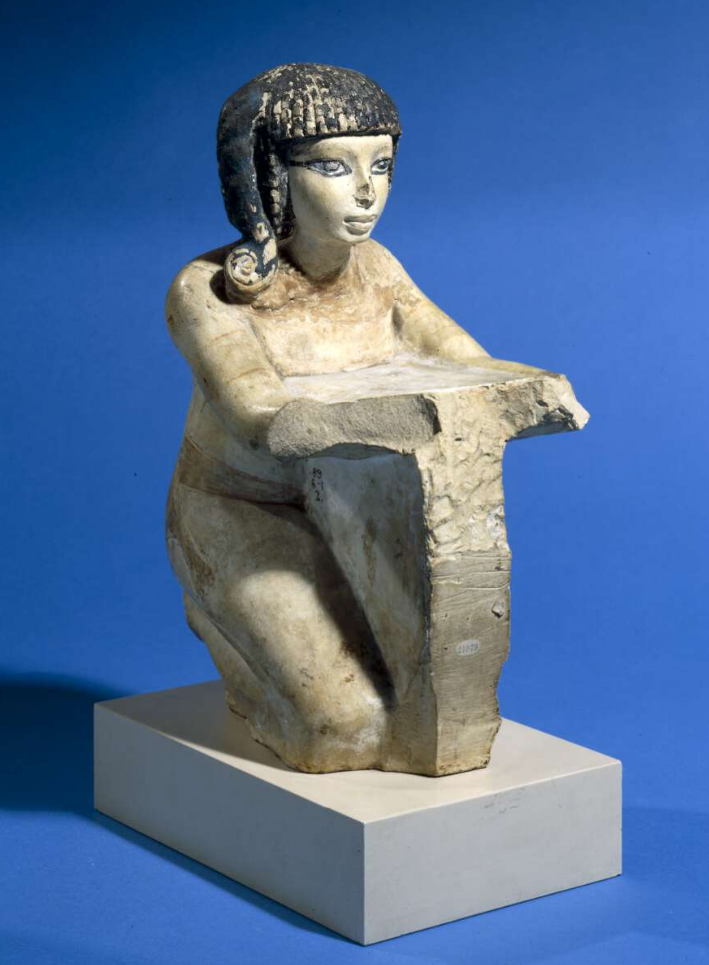Prince in a Priestly Role

Limestone Statue of a Prince in a Priestly Role
Date: c. 1375–1355 B.C.
Period: New Kingdom, 18th Dynasty
Subject: Almost certainly Prince Thutmose, older brother of Akhenaten

Amenhotep III and his Great Royal Wife, Tiye, had a firstborn son named Thutmose. As the eldest royal son, he was the designated heir to the throne and held several prestigious titles, including High Priest of Ptah, which reflected his early preparation for both religious and royal duties.

A finely carved statuette depicting him as a youthful priest—now housed in the Musée du Louvre—illustrates his elevated status during his brief life. Unfortunately, Prince Thutmose died at a young age, leaving the succession open for his younger brother, who would later become Pharaoh Akhenaten.

The limestone statue portrays a kneeling priest who once held an offering table. He wears a short, layered wig with a side lock of youth on the right side of his head, a hairstyle traditionally associated with royal children and young princes, but also symbolic of priestly roles, especially those connected to the god Ptah.

Traces of red-painted armlets, a leopard-skin garment draped across his back—another mark of priestly rank—and faint remains of a “gold of honour” collar enhance the sculpture’s elegance. His facial features are rendered with remarkable delicacy: almond-shaped eyes outlined in black, a softly modelled face, full lips, and a small, sharply defined nose, all characteristic of the refined artistic style of Amenhotep III’s reign.










